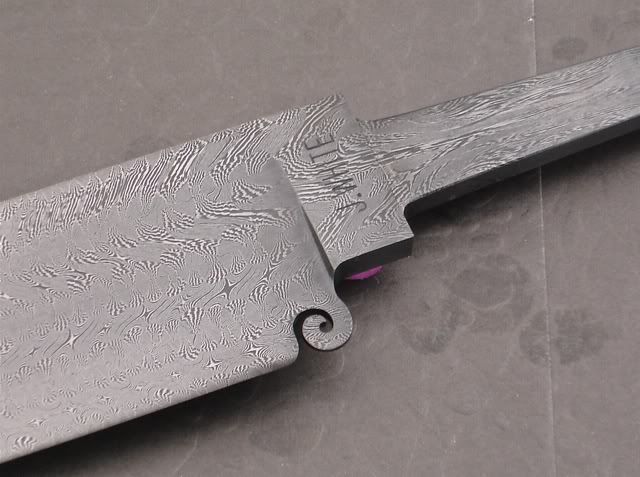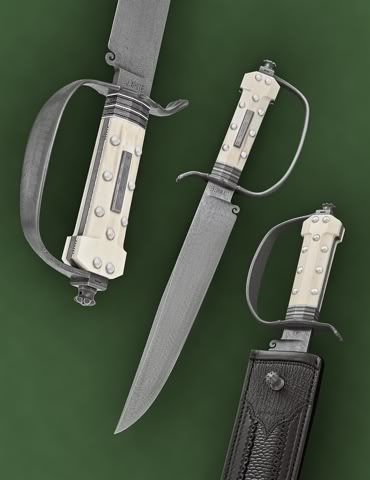This is a topic that I haven't seen discussed and thought that I would start one to see everyone's view points. I haven't been one to add a Spanish notch but would admit that on some knives that they add an extra touch to the cosmetics of the blade.
Do you use them and when do you feel that they are a plus to the knife?
Thoughts?
Gary
This is an interesting Topic.
Can we also share some advice on techniques or tips for creating a Spanish Notch from our ABS members.
Dan Cassidy
Journeyman Smith
Send an email to Dan

Gary,
Having recently finished a number of Dogbone Bowies, each with Spanish notch, let me just give a few thoughts ,and share a couple techniques.
It's been suggested that the "Spanish Notch" comes into American traditional knifemaking through the "Belduque,"a common knife in the Southwest. This large fighting and utility knife had the typical decorative notch near the choil.
The "L.Kimball" Dogbone Bowie that serves as an inspiration to so many modern reproductions shares this detail, as do most of Tim Hancock's Dogbone beauties, that directly influence my work.
I've employed this feature in all my Dogbones, as an artistic "cue" to the appreciation of a traditional style.
That being said, there's no rule about what stylistic features are required or prohibited on your work. Unless you're directly reproducing a particular historical example, it's your decisions that make up the "look" of your knife.
As to technique, I use a jeweler's saw, with a #6 blade, to cut the notch into the rough-ground blade, before hardening. If appropriate, a small hole may be drilled in the blade as a starting point.
Three inch needle files are a great help to clean up the cuts, although the jeweler's saw will "shoulder cut" clean-up amazingly well.
Finally, to clean up the saw lines, a folded strip of 220 grit sandpaper used "shoe-shine" fashion cuts and smooths even intricate curves. Doubled, the paper is stiff enough cut particular angles.
Here's an example of one cut with a jeweler's saw to a 1/16" drilled hole, slightly cleaned with the tip of a 3" round needle file, and sanded with a 1/2 inch wide strip of 220 grit paper , folded and cupped.


John
Thanks, John. That's beautiful work. Was there ever a function to the notches or were they purely ornamental?
Gary
For a simple "teardrop" shaped notch, I just used a drill press and my bandsaw and shaped it with little files from HD.
|quoted:
It's been suggested that the "Spanish Notch" comes into American traditional knifemaking through the "Belduque,"a common knife in the Southwest. This large fighting and utility knife had the typical decorative notch near the choil.
John
John
Wow. Lovely work. I have a question abit off topic. I've like Belduques since I saw and bought my first one from a smith in New Mexico (Joe Delaronde) and since then, have seen very few: one in the Texas Ranger Museum, one in a NM museum and one in San Diego in someone's collection. Can you help with any references on the knife and its history?
Thanks
Kevin

